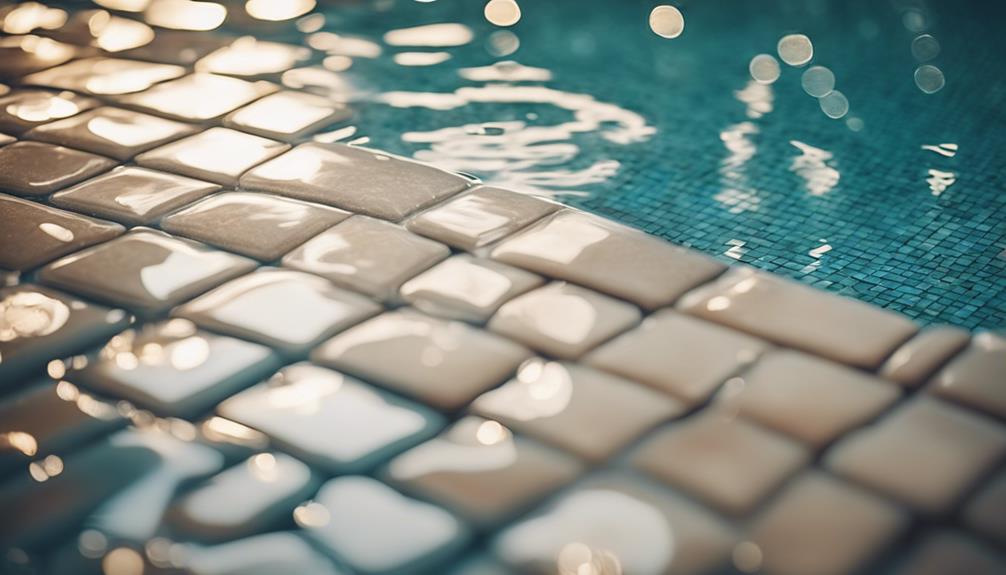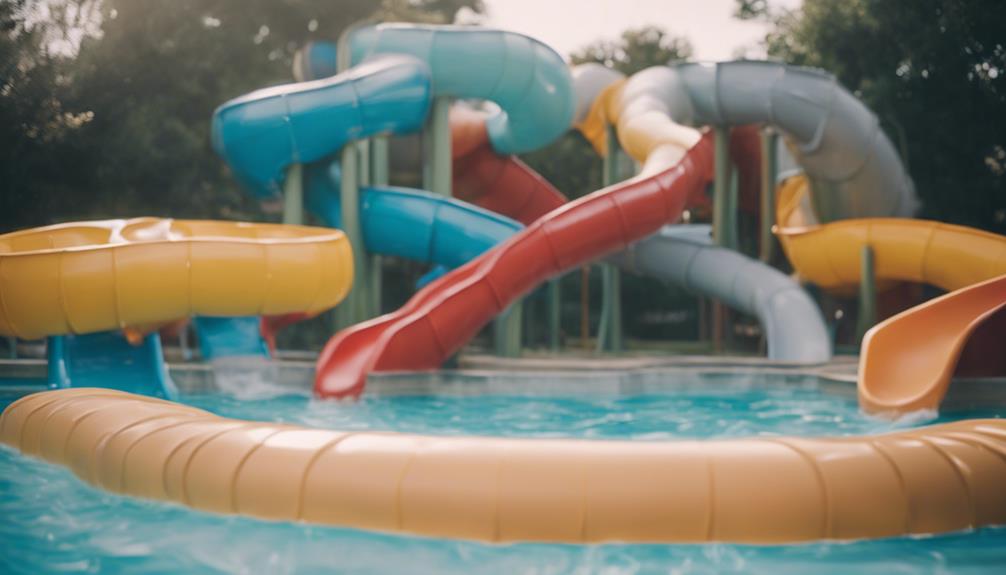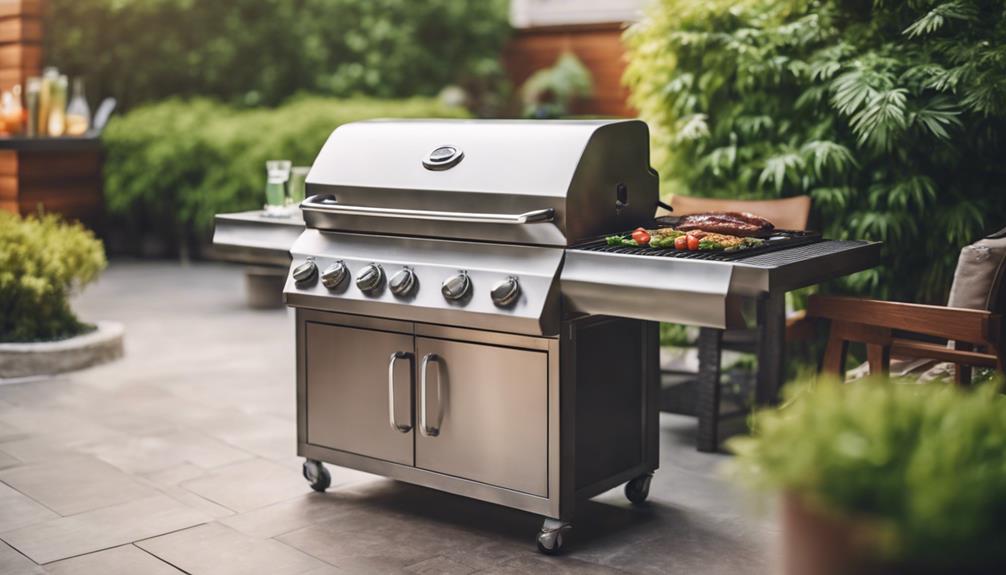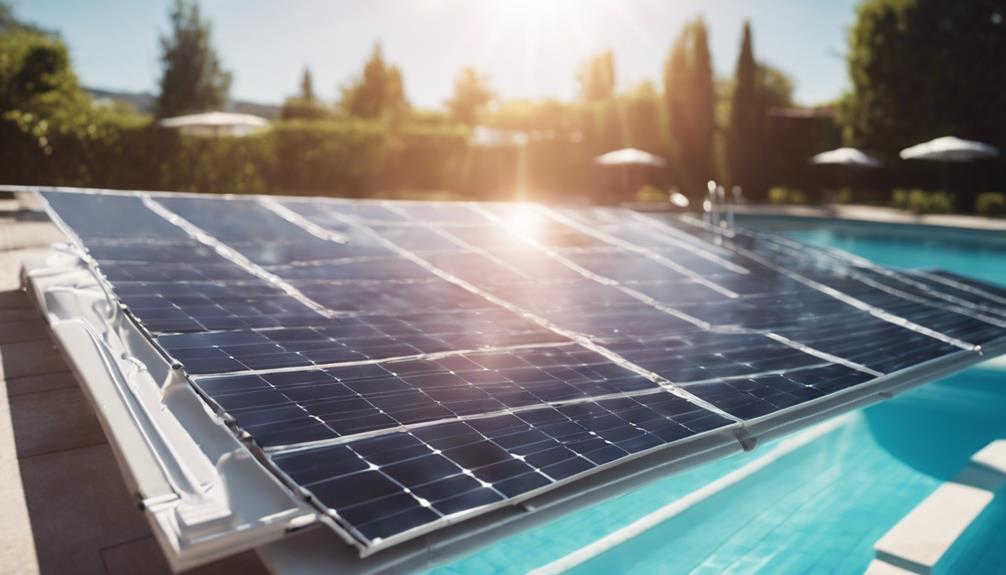Understanding plaster, aggregate, and tile finishes is essential for choosing the best swimming pool interior surface. Plaster offers customization at a lower cost but may stain easily. Aggregate finishes blend sand and pebbles for durability lasting 7-20 years. Tile options like glass, porcelain, or stone add aesthetic appeal, with glass being a high-cost, low-maintenance choice. Consider durability, aesthetics, and maintenance needs when deciding. Consulting experienced professionals like Shoreline Pools can provide personalized recommendations for informed decisions. The key to selecting the ideal finish lies in exploring these various options and factors.
Key Takeaways
- Plaster finishes offer customization, cost-effectiveness, but require maintenance due to potential staining.
- Aggregate finishes blend sand and pebbles for longevity up to 20 years.
- Tile finishes in glass are high-end, durable, and low-maintenance.
- Consider durability, aesthetics, and maintenance when choosing a pool finish.
- Consult professionals like Shoreline Pools for personalized advice on the best finish for your pool.
Plaster, Aggregate, and Tile Finishes
When considering swimming pool interior surface finishes, options such as plaster, aggregate, and tile provide distinct characteristics and considerations for durability and aesthetics.
Plaster finishes, composed of water, Portland cement, and silica sand, offer an inexpensive choice that can be dyed for customization but may stain easily due to its gray color.
Aggregate finishes, a blend of sand and pebbles in materials like marble, quartz, or glass, boast a longevity of 7-20 years but can be uncomfortable to walk on and prone to calcium buildup.
Tile finishes, available in glass, porcelain, or stone, range in price and maintenance requirements, with glass being the most expensive yet low maintenance choice.
Each finish type has its own advantages and drawbacks, making the selection process vital for achieving the desired pool aesthetic and longevity.
Factors to Consider When Choosing
Considering the distinct characteristics and considerations of plaster, aggregate, and tile finishes, it is imperative to carefully evaluate various factors when choosing the most suitable interior surface finish for a swimming pool.
When making this decision, take into account:
- Durability: Assess the expected lifespan and resilience of the finish.
- Aesthetics: Consider the visual appeal and how it complements the overall pool design.
- Maintenance: Evaluate the level of upkeep required to keep the finish in top condition.
Importance of Professional Consultation
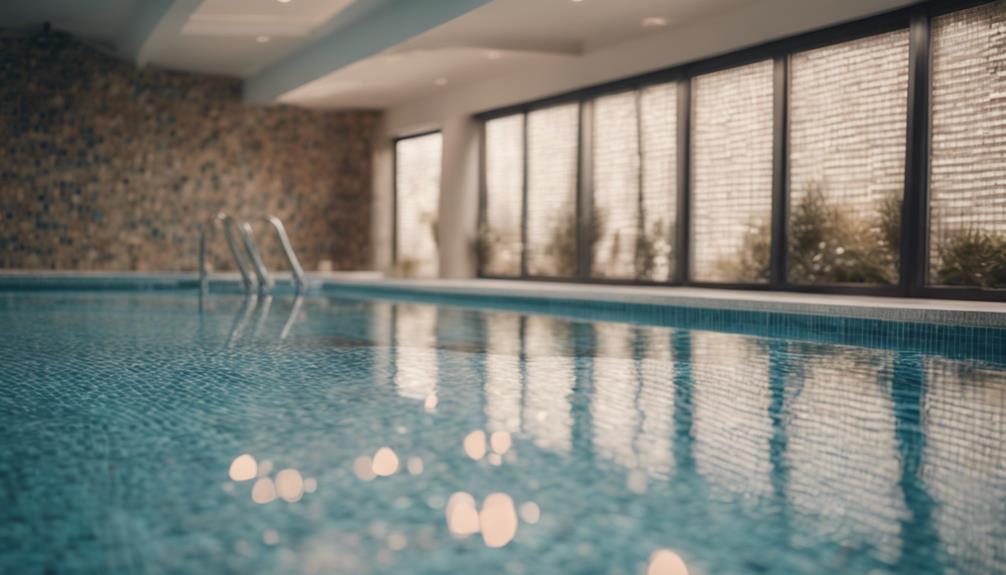
Engaging with experienced professionals is essential when deliberating on the selection of an appropriate interior surface finish for a swimming pool. Pool experts can provide valuable insights into the durability, maintenance, and aesthetic aspects of different finishes, ensuring that the chosen finish aligns with the pool owner's preferences and budget. Their guidance can help avoid costly mistakes and ensure a successful outcome. Consulting professionals like Shoreline Pools can offer personalized recommendations based on individual needs and pool requirements, ultimately leading to a well-informed decision.
| Benefits of Professional Consultation | Emotions Evoked |
|---|---|
| Expert Advice | Trust |
| Tailored Recommendations | Confidence |
| Avoiding Costly Mistakes | Relief |
Frequently Asked Questions
Can the Pool Interior Finish Be Repaired if Damaged?
Pool interior finishes can be repaired if damaged. The extent of repair depends on the damage's nature and severity. Professional pool technicians can assess the issue, recommend suitable solutions, and execute the necessary repairs to restore the pool's integrity.
How Do Different Finishes Affect Water Temperature?
How do different finishes affect water temperature? Factors such as color, material density, and texture impact water temperature in swimming pools. Darker colors absorb heat, while denser materials retain warmth. Texture influences heat absorption and dissipation, affecting the overall water temperature.
Are There Eco-Friendly Options for Pool Finishes?
Eco-friendly options for pool finishes are available, catering to sustainability concerns. Choices like pebble and glass aggregate, along with recycled glass tiles, provide environmentally conscious alternatives. Consultation with professionals can help in selecting the most suitable option.
What Is the Recommended Lifespan for Each Finish?
The recommended lifespan for each pool finish varies: plaster lasts 7 to 10 years, aggregate endures 7-20 years, while tiles have a longer lifespan. Consider budget, maintenance, and aesthetics when choosing a finish. Consult professionals for guidance.
Can the Finish Be Customized With Designs or Patterns?
Customizing pool finishes with designs or patterns is possible. Options include dyeing plaster, selecting different aggregate types, and choosing tiles in various colors and patterns. Consult professionals for advice on customizing finishes to suit your preferences.
Conclusion
To sum up, choosing the right swimming pool interior surface finish is essential for both visual attractiveness and long-term resilience. Professional guidance is necessary to navigate the numerous factors at play in the decision-making process.
Surprisingly, as per a study by the National Plasterers Council, plaster finishes make up around 60% of all interior surface finishes in swimming pools.
By thoughtfully weighing factors like budget, upkeep, and design preferences, individuals can make educated decisions that improve the overall swimming pool experience.

